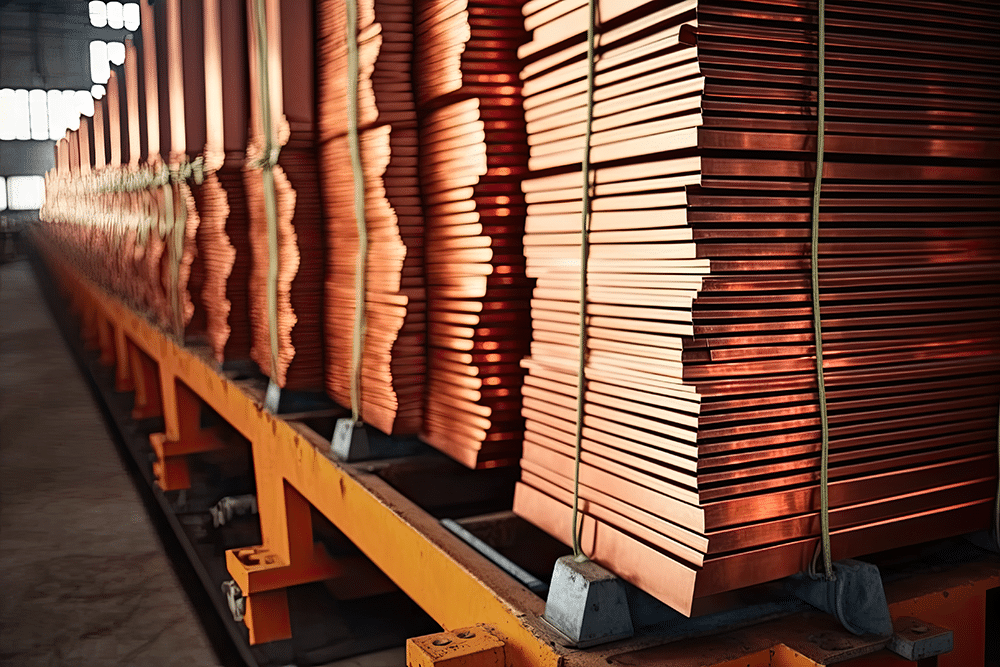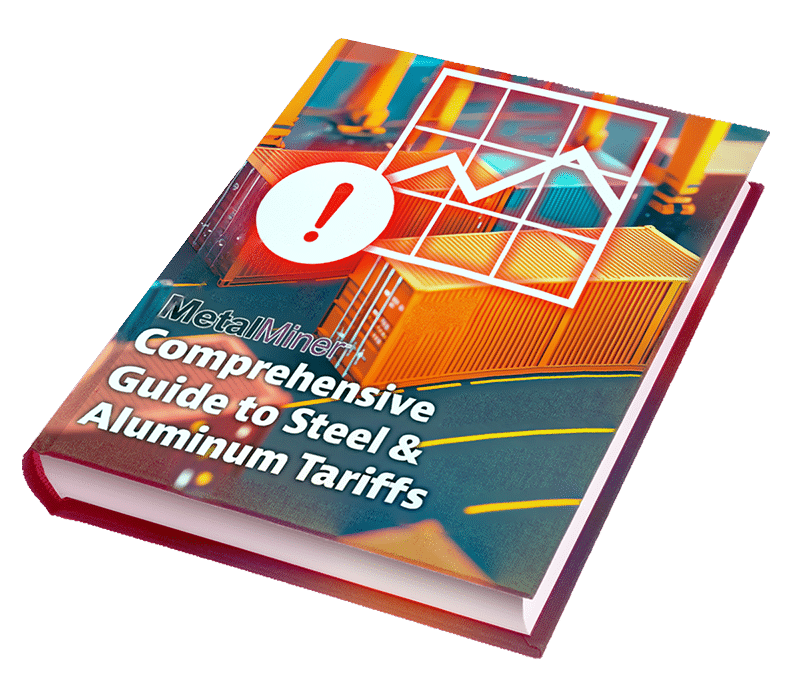Copper MMI: What’s Next for Copper Prices After Peak

The Copper Monthly Metals Index (MMI) moved up, accelerating gains from the previous month. The Bullish U.S. price of copper saw the index rise by 4.75% from March to April.
Price of Copper Finally Finds Peak
Although they have subsequently been delayed, reciprocal tariffs helped copper prices find a peak. At the start of 2025, Comex copper prices embarked on a sharp bull run. Driven by tariff threats amid an ongoing investigation into copper imports, U.S. buyers rushed into the market to refill their inventories. A widening arbitrage between its LME counterpart helped pull additional material into the U.S. This saw Comex copper prices hurtle past their previous all-time high by March 19, until they found a peak roughly one week later.
While LME prices rose alongside Comex, momentum appeared notably more muted. This created a historically wide delta between the two contracts, which has only recently begun to narrow after both turned bearish at the end of March.
Keep up with why and when copper prices shift all throughout 2025. Get the latest updates with MetalMiner’s free weekly newsletter.
How Reciprocal Tariffs Impacted Copper Prices
Reciprocal tariffs came as a surprise, not only because of their scope, but because of their scale. As they often do, surprises lead to outsized reactions within markets. For copper, the exemption of copper, was at least partially responsible for the sharp pullback and eroding delta between LME and Comex prices. With buyers preparing for significantly higher duties on copper imports into the U.S., leaving copper off the list of “liberation day” tariffs forced investors to shift their outlook.

Perhaps more significantly, markets feared that the scale of tariffs would also impede global growth. This saw bets on a U.S. recession increase as a result. With copper often seen as a bellwether for global economic health, investors began pricing in the bearish outlook into the copper market, expecting lower demand conditions.
What’s Next For Tariffs
Very quickly, markets were surprised once again with the announcement of a 90-day pause for reciprocal tariffs except those placed on China. The unexpected shift helped copper prices find a bottom, followed by a modest rise before copper prices shifted sideways.

Markets appear decisively uncertain about what will happen next, widely shaken by fluctuations in trade policies. The 90-day pause could extend further, according to some reports. Ongoing negotiations could also see tariff rates against certain countries shift from their originally proposed levels. The pause puts markets like copper in a three-month wait-and-see period before the White House more clearly defines what’s coming next.
Access MetalMiner’s free Monthly Metals Index Report to understand economic copper price drivers through detailed price charts and expert copper analysis, enabling smarter procurement strategies.
Bullish and Bearish Copper Price Threats
The newly emerging sideways trend of the price of copper largely indicates that markets appear unclear on how copper demand conditions will fare in the coming year. Caught between bullish and bearish drivers, the copper market has proven to be one of the most dynamic base metals over the last few years.
The metal has repeatedly found new all-time highs as a result of supercycle expectations, only to be followed by sharp crashes when the reality of the market forces investors to pare back bets. As mixed signals remain a fixture of the market, volatility risks will continue to plague the price of copper.
- Raw Material Shortage: Little has changed in regard to raw material tightness. While some of this is the result of the considerable expansion of China’s copper smelter capacity, mining constraints offered no relief. This has led to record-low treatment and refining charges, which signals limited availability. This places a cap on how much refined copper can be produced, a bullish market signal for the price of copper.
- Refined Surplus: According to the International Copper Study Group, the market will remain in surplus during 2025. While more narrow compared to the surplus estimated in 2024, this nonetheless suggests that the market will remain well-supplied, even with the rising demand for copper.
- Well-Stock Inventories: Thus far, LME, Comex and SHFE inventories appear to be in good shape. Last year’s surplus helped cumulative exchange inventories peak at a higher level in 2025 compared to where they peaked in 2024. While there’s no way to perfectly predict how quickly they will fall, this offers a headwind to market bulls.
- Global Economic Health: Market forecasts hinge on how well demand conditions will hold up in the coming year. Global slowdown risks remain on the table, which would drag copper prices lower, particularly should the U.S. fall into a recession. On the flip side, the U.S. economy has largely proven resilient over the past few years, and until trade policies are decided, it remains a mixed bag over what’s next. With electrification demand on the rise, a stronger-than expected global economy could place significant pressure on copper supply conditions.
Biggest Price of Copper Shifts
Read what’s next for the price of copper in April’s Monthly Metals Outlook. The report provides both short-term and long-term forecasts plus buying strategies, giving you the edge to navigate market volatility and maximize cost savings. See a free sample report first.
- U.S. copper producer prices for copper grade 122 witnessed the largest increase of the overall index, rising 7.76% to $6.11 per pound as of April 1.
- U.S. copper producer prices for copper grade 102 increased by 7.43% to $6.36 per pound.
- Indian primary cash copper prices rose 7.02% to $10.50 per kilogram.
- Chinese copper wire prices experienced a 4.5% increase to $11,022 per metric ton.
- Chinese copper scrap prices rose by 4.23% to $10,969 per metric ton.
